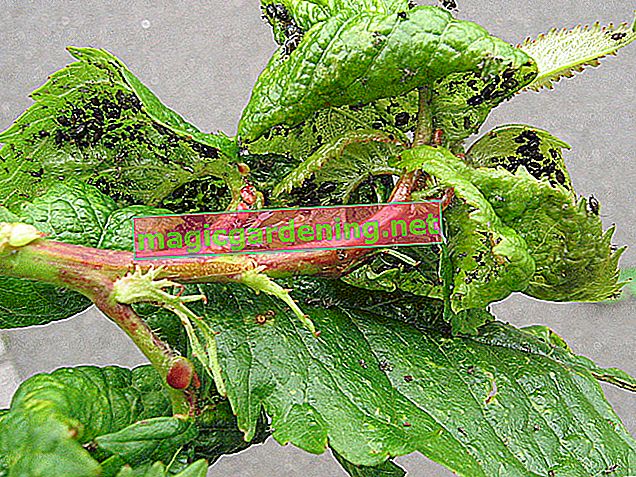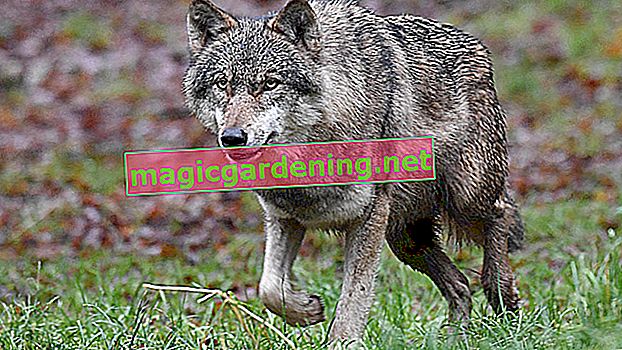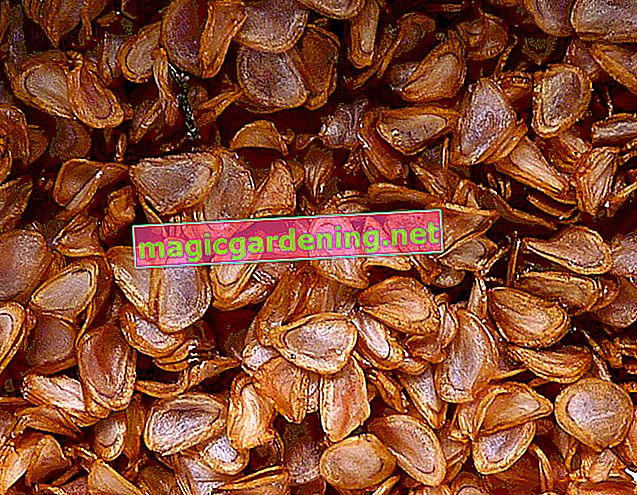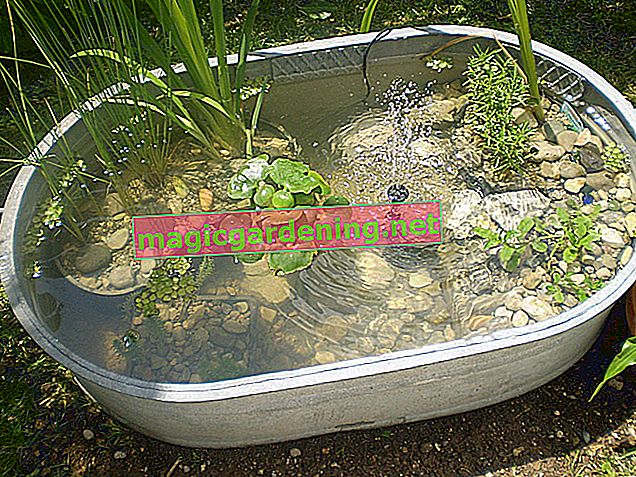
Explanation of terms
Under the name “black cherry aphid” - also known as “black cherry aphid” or simply “cherry aphid” - two species of this species are combined: black sweet cherry aphid (Mycus pruniavium) and black sour cherry aphid (Mycus cerasi). The difference is of little importance to a gardener, as both species infest both sweet and sour cherry trees and go through largely the same development.
also read
- Infestation in ivy by diseases and fungal spores
- More than annoying: the aphids invade the greenhouse
- The cherry trees are easy to care for
Damage images
The cherry aphids preferentially attack young leaves at the shoot tips. The difference lies in the damage caused by the various aphids. While the leaves are strongly curled up when they are attacked by sweet cherry aphids and the tips of the shoots wither and possibly die, the infestation of sour cherry aphids has a growth-inhibiting effect on the new shoots, the leaves only bulge slightly.
The aphids secrete a sugary liquid. The so-called honeydew in connection with the soot dew that forms on it contaminates and sticks the leaves and the fruits. The aphids migrate to the wild herbs between mid-May and early June, only to return to the cherry trees to lay eggs. The cherry aphid infestation is particularly troubling for young trees; the older trees usually survive this without major damage.
Combat
When combating aphids, preventive measures should be in the foreground. This includes examining the new shoots and leaves during and immediately after flowering. The cockchafer and other insects in the garden naturally control the aphid colonies by eating the aphids. These beneficial insects need to be spared and promoted. When reaching for the sprays, one should opt for preparations that are gentle on beneficial organisms.
Tips & Tricks
If spraying cannot be avoided, it must be taken into account that this is only useful before rolling up the leaves.








